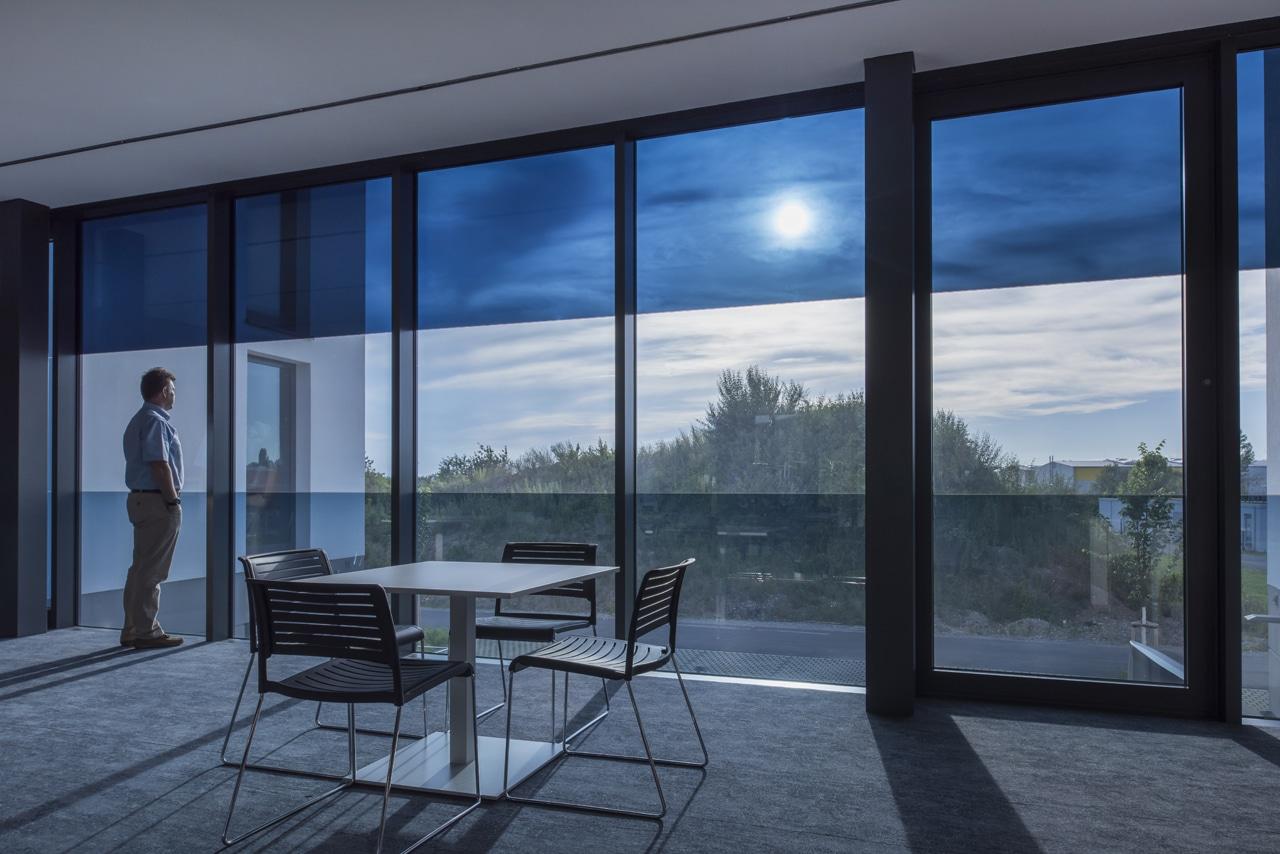Electrochromic glass is a smart glass technology that dynamically controls the transmission of light and heat in a building in response to electric signals. As an emerging green building material, electrochromic glass offers numerous environmental and occupant well-being benefits. This article explores the various aspects of electrochromic glass including its working mechanism, applications, benefits and the current market scenario.
Working Mechanism
Electrochromic glass works on the principle of reversible redox chemical reactions occurring in the electrochromic materials deposited between two conducting electrode layers. When voltage is applied, ions migrate into the electrochromic layer changing its optical properties. In the clear state, electrochromic glass looks transparent like normal glass allowing maximum visible light transmission. When activated with low-voltage electricity, it darkens and decreases the transmission of light depending on the applied voltage. This tinting action can be precisely controlled between the clear and dark states. The glass remains tinted even after removing power, due to the ion-storage properties and maintains the desired level of light transmission until power is applied again to change its state.
Applications in Buildings
Electrochromic Glass finds widespread applications in commercial and residential buildings. Some key applications are:
- Solar Control - It is widely used as solar control glass in south, west and east facing glazing in commercial buildings to reduce solar heat gain and thereby reducing energy consumption for cooling.
- Daylight Harvesting - In office buildings, it allows controllable light transmission based on available daylight to optimize interior lighting and reduce electric lighting energy usage.
- External Solar Shades - It provides integrated solar shading without the need for external blinds or shutters in residential buildings reducing cooling loads.
- Privacy and Security - The smart tinting ability provides on-demand privacy and security in conference rooms, bedrooms, hospital rooms etc.
- Showroom and Museum Display - It provides an elegant solution for controlling natural light exposure in display of light sensitive articles and art.
Environmental and Occupant Well-being benefits
The dynamic control of light transmission offered by electrochromic glass brings about significant environmental as well as occupant well-being benefits compared to conventional window systems:
Reduced Cooling Energy Usage: By effectively controlling solar heat gain, it reduces cooling energy consumption in buildings located in hot climates by around 30-70%.
Superior Daylight Performance: Its ability to precisely modulate daylight transmission as per requirement ensures optimal daylighting with minimum need for electric lighting during daytime.
Glare Control: The low transmittance dark state is specially effective in reducing harsh direct sunlight and glare inside spaces promoting visual comfort.
Enhanced View Experience: Compared to fixed reflective or absorptive glazings, electrochromic glass offers clear views in the untinted state and privacy on demand in the darkened state.
Low Maintenance: Being an integrated system, it does not require external shading devices or manual operation and aligns well with the concept of self-regulating smart facades.
Occupant Well-being: Studies have shown electrochromic windows can improve occupant satisfaction, health and productivity by enabling individually controlled daylighting and views to outside.
Market Scenario
The global electrochromic glass market value was estimated at around USD 376 million in 2020 and it is forecast to witness strong growth between 2021-2027 at a CAGR exceeding 13% owing to factors like urbanization, green building mandates, commercial building renovations and technology advancements. North America and Europe currently dominate the electrochromic glass consumption driven by advanced commercial building stock. Major players include SAGE Electrochromics, Research Frontiers, ChromoGenics, Magna Glass & Window, Kinestral Technologies, Polytron etc. With more functionalities and applications being demonstrated, wider market penetration of electrochromic glass technology can be expected over the next decade.
Electrochromic glass is a leading smart glass technology with potential to deliver significant sustainability and user experience benefits in buildings. Its ability to dynamically modulate daylight and heat in response to outdoor climate conditions align well with the concepts of resource efficient and self-regulating smart facades. With growing availability, reducing costs and evolving applications, electrochromic glass market is poised to play a pivotal role in greening the global built environment in the future.
Get more insights on this topic:
https://www.dailyprbulletin.com/electrochromic-glass-insights/

